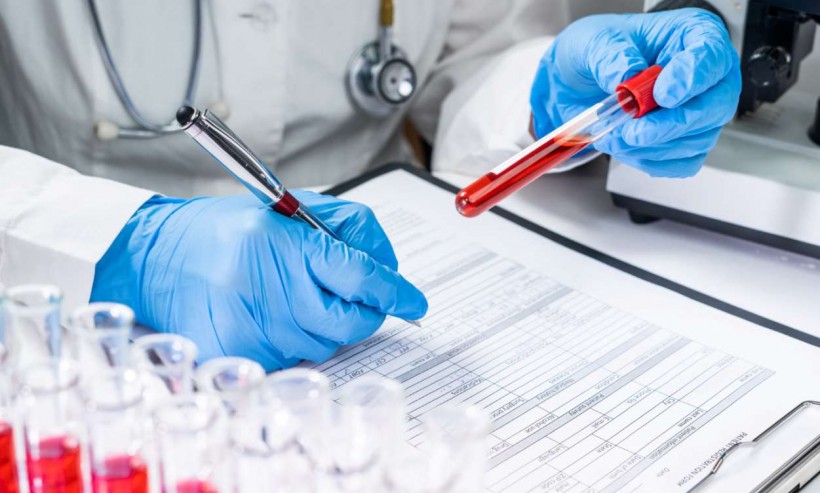How to Get Tested for HIV: Importance of HIV Tests
Warning: Undefined variable $post in /home/dietofli/public_html/wp-content/plugins/code-snippets/php/snippet-ops.php(584) : eval()'d code on line 3
Warning: Attempt to read property "ID" on null in /home/dietofli/public_html/wp-content/plugins/code-snippets/php/snippet-ops.php(584) : eval()'d code on line 3
The estimated reading time is 5 minutes
Warning: Undefined variable $post in /home/dietofli/public_html/wp-content/plugins/oxygen/component-framework/components/classes/code-block.class.php(115) : eval()'d code on line 3
Warning: Attempt to read property "ID" on null in /home/dietofli/public_html/wp-content/plugins/oxygen/component-framework/components/classes/code-block.class.php(115) : eval()'d code on line 3

One of the biggest challenges medical science is facing is understanding the HIV disease caused by a virus that attacks the immune system of the human body. It is not possible to cure this disease but can be monitored and managed.
To detect the presence of this virus infection, there are certain tests designed by experts over the years. The detection of this infection is very crucial in planning the treatment and management of a patient. Let us learn what HIV is first. (1)
What is HIV?
It is an infection caused by the human immunodeficiency virus (HIV), a strong pathogen. If not treated, it can cause acquired immunodeficiency syndrome (AIDS). At the primary stage, it is easier to contain this virus and make good progress. When not checked on time, it can turn out to be a chronic life-threatening situation for the patients.
Once contracted, this progressive infection remains throughout the lifespan of a patient. With proper medical treatment and attention, this disease can be managed and a healthy life can be led to the patients. The progression of HIV to AIDS can be stopped.
What is AIDS?
Acquired immunodeficiency syndrome (AIDS) is a progressive stage of HIV infection. When a person has had an HIV infection for several years, it is highly possible that he has developed AIDS. The immune system of that person is immensely weakened causing serious health issues and infections.
Tests for HIV and AIDS
The types of HIV tests are given below.
- Standard HIV blood test – This HIV test is done by drawing a sample of blood from a patient. It is done to find the antibodies produced when this virus invades the immune system within 23 to 90 days of contraction.
- Rapid blood test – This test is done to detect antibodies by simply using a drop of blood. A drop of blood is collected by pricking the finger of a patient. Its window ranges between 18 to 90 days of contraction. Kits are available in the pharmacies.
- Antibody/antigen test – This test, as the name suggests, is done to check the specific antigens and antibodies present in the bloodstream due to the contraction of HIV. It takes 18 to 45 days to get detected from the day a person is exposed to it.
- Rapid oral test – A quick and easy test is done can be done at home with an oral kit. A swab between the teeth and gums is the sample to be collected. This sample is not saliva. It cannot detect new infections but gives accurate results when the infection is old.
- Urine test – This HIV test is done by taking a urine sample and looking for the HIV antibodies filtered by the kidneys. This test is not that accurate. Further confirmation is needed by taking an oral swab or blood samples.
- Nucleic acid test (NAT) – It is a test designed to check the presence of pathogens, not antibodies or antigens. This test can detect the presence of HIV within 10 to 33 days of contraction. It is also called a Viral Load Test or an RNA test. A blood sample is drawn from the patient to check the specific nucleic acids present in the virus.
These tests are conducted to confirm the presence of pathogens in the human body. They are also done to confirm whether a person has developed AIDS or not. Hence, an AIDS test is also done in the same way.
Symptoms to look for
The symptoms that emphasise the need for an AIDS test are:
- Sore throat
- Fever
- Night sweats
- Swollen lymph nodes
- Rash
- Muscle aches
- Mouth ulcers
- Fatigue
- Chills, etc
A physician will ask to take a test to confirm the presence or absence of this virus. The test is done to check the stages of HIV infection. The stages of HIV infection are:
- Acute HIV infection – Presence of a high amount of HIV with flu-like symptoms. Patients are in highly contagious stage.
- Chronic HIV infection – This stage is also termed as clinical latency where HIV is active but may not show symptoms.
- AIDS – It is the last stage of HIV infection when a patient has a huge viral load that can be transmitted easily. The immune system has been damaged remarkably causing various other illnesses. (2)
Need of HIV tests
From the above discussion, we can clearly understand why these HIV tests are done. It is mandatory to check the current condition of the infection so that a proper treatment and disease management can be planned.
An HIV test becomes crucial due to the following reasons.
- Medications need to be started as early as possible for the containment of HIV progression.
- It is a way to detecting and stopping HIV from spreading among the humans.
- Proper tests are done to detect this infection in a pregnant woman and to take measures to stop it from spreading to the baby.
Hence, these tests are very important for the detection and treatment of HIV disease. If detected earlier, a patient can lead a good life.














